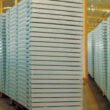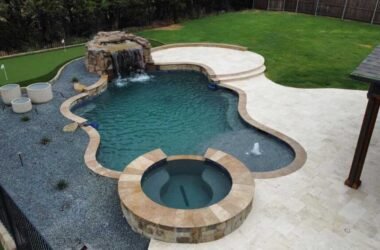The architectural landscape of the United Arab Emirates is a scene of innovation, luxury, and modernity. In a city of skyscrapers, luxurious villas, and modern office buildings, glass rooms with light and airy spaces have found their niche. Such buildings are not just about the beauty of appearance; they are about a cultural transition towards openness, sustainability, and a stronger connection to the natural environment.
Glass rooms have become synonymous with modern design, both as the feature in private homes on the Palm Jumeirah in Dubai, and in business premises in Abu Dhabi. But what exactly is a glass room and why has it become so prominent within the UAE?
The United Arab Emirates is characterized by rapid urbanization, the high-quality of architectural production, and the ostentatious sense of luxury. The glass rooms are gaining popularity in the residential and commercial world as the region shifts towards modern design idioms. These mostly transparent or semi-transparent enclosures combine internal comfort and external perception, and offer a perfect balance between privacy, aesthetics, and functional usefulness, which flourish in the Emirates’ innovative architectural environment.
What is a Glass Room?
A glass room is a structure that is made mainly out of glass panels, usually supported by aluminum or steel structures. These types of buildings allow the greatest amount of daylight to enter the building with minimal climate control. Glass rooms UAE can be surrounded or marked by a single open facade, as the purpose and context dictate. There are specific variations:
- Sunrooms or conservatories
- Glass additions
- Glass-enclosed outdoor patios
- Glass walls and roofs to articulate pergolas
- Glass office partitions or glass meeting rooms
These buildings are planned in the UAE with special consideration of the climatic conditions, aesthetic harmony, and use pattern.
The Reasons behind the popularity of Glass Rooms UAE
The aesthetic aspect is, of course, convincing: a glass room gives the Emirati built environment a modern and sophisticated appearance, improves the visual perception, provides a sense of urgency, and can be customized to fit with the traditional and modern idiom.
No less impressive is climatic flexibility. Despite the extreme heat of the UAE, these structures can be used all year round due to highly developed glass technologies, e.g., a double-glazed, ultraviolet-reflecting, and insulated glass. They are used to reduce summer temperatures and maintain warmth during the temperate winter when used with shading devices or smart-glass systems.
The panoramic nature of glass walls is also meaningful. Be it panoramic views of deserts, seas, or skylines, a glass room provides an unobstructed visual pleasure. In the case of houses and hotels in premium locations, this facility will increase luxury as the occupants can make the best of the surrounding environment with conspicuous comfort.
Moreover, the glass room can be used in a multifunctional way to a large extent. They are used as personal lounges or smoking rooms, home offices or study rooms, pool coverings, extension of the dining areas, greenhouses, visitor rooms and even as retail display or showrooms in the UAE.
Overall, the glass room is a perfect example of modern architecture in the United Arab Emirates, which provides a combination of aesthetic, functional, and eco-friendly features in the context of a high-paced urbanization and a new wave of architectural experimentation.
The last few years in the United Arab Emirates have seen the emergence of four major themes in the spheres of architectural design and construction:
Installation of smart glass
In luxury homes, hotels and corporate buildings, switchable or smart glass allows the occupants to control the level of transparency using electronic means. This kind of functionality is essential in environments where privacy stipulations are high and the control of daylight essential.
Glass systems that are retractable
Several UAE residents prefer designs that have retractable panels that can transform internal spaces into open air extensions to allow them to live outdoors in the period between October and April, the cooler months in the region.
Frameless glass architecture
This arrangement has the effect of evoking a sense of visual continuity by doing away with perimeter frames, which gives the interiors a feel of modernity and grandeur. The activity has become especially popular in villas, rooftop terraces, and beachfront hotels, in Dubai, Abu Dhabi and Sharjah.
Solar-control glass UV-blocking
Because of the high levels of solar radiation in the UAE, construction requirements often include solar-control paint/coatings and low-emissivity (Low-E) glazing to limit energy transmission and minimize air-conditioning costs.
Technologies and Materials
- Glazing: tempered, laminated, double-glazed glazed or triple-glazed; Low-E glass
- Frames: aluminum powder-coated, stainless steel, thermally broken frames
- Flooring: composite decking, tiles, polished concrete
- Insulation: thermal, acoustic, sophisticated sealing system
- Automation: it can be connected to smart-home systems, automated blinds, lighting, and temperature control
Regulatory and Approvals
The UAE has municipal authorities that oversee construction regulation such as Dubai Municipality, Abu Dhabi Department of Municipalities, and Sharjah Planning and Survey Department.
Principal Requirements to be Approved
- Buildings are required to meet civil-defense codes of fire safety and structural durability.
- Envelopes in buildings should be energy-efficient, especially in new constructions.
- Some gated communities and master-planned developments, such as those of Emaar, Nakheel and Aldar, have design-review committees.
Residential Environments
- Villas: Patios or gardens are usually extended by home owners to make a family room or a majlis area.
- Apartments: Terraces that are glass enclosed offer extra living area.
- Rooftop spans: Can be transformed into gyms, lounges or spa settings with insulated glass rooms.
Commercial Sectors
- Restaurants: Use glass constructions as a winter garden, smoking room, and a place of private dining.
- Hotels/resorts: Build poolside lounges or sunrooms.
- Corporate offices: Glass partitions and meeting rooms should be used to maintain transparency and collaborative working.
- Retail showrooms: High-value products are emphasized in luxury malls by the use of glass architecture.
UAE Climatic Limitations
Despite the significant benefits that glass rooms have to their owners, the local environment poses separate challenges:
Heat Management
Enclosures can trap heat even when they are using insulated glass. Solutions include:
putting up thermal curtains or blinds; applying reflective glass coatings; and making sure there is proper ventilation and air-conditioning.
Dust and Sandstorms
Glass surfaces may be covered during frequent sandstorms and this hinders visibility. Mitigation activities are:
using self-cleaning technologies in glass; employing high-pressure sealing systems; and having frequent cleaning contracts.
Structural Stability
Due to the heavy wind loads-especially on the coast-structural certification to the wind pressure is necessary.
Green Building and Sustainability
UAE urban planning is paying more attention to sustainable building. Green building goals are furthered by glass rooms that are well-calculated: daylighting, that decreases the use of artificial lighting; energy efficiency, provided by insulated glass; intelligent systems which maximize shading to save energy; and utilisation of employables. The Green Building Regulations in Dubai and the Estidama in Abu Dhabi implement the rules of sustainability that are applicable to glass buildings.
Conclusion
Modern living and elegant design unite seamlessly in the heart of desert innovation. These spaces blend contemporary aesthetics with functionality, offering comfort and sustainability amid challenging climates. By merging technology, creativity, and style, they redefine urban lifestyles, turning desert landscapes into hubs of modern luxury and architectural brilliance.









